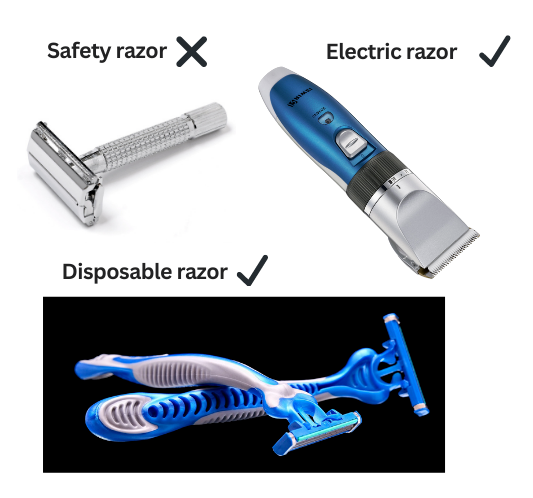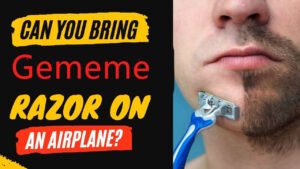When preparing for travel, a common question that arises for many passengers is, “Can I bring a razor on a plane?” This seemingly simple query often leads to unnecessary confusion and anxiety when packing. Whether it’s for a quick business trip or a prolonged vacation, understanding the regulations surrounding your personal grooming items, especially razors, is crucial.
Navigating the Transportation Security Administration (TSA) guidelines for razors is not just about avoiding confiscation at security checkpoints; it’s about ensuring a smooth, stress-free travel experience. Any delays at security can impact your entire journey, from missing connecting flights to simply starting your trip on a frustrating note. This comprehensive guide will meticulously break down the rules for various types of razors, including disposable razors, cartridge razors, electric razors, traditional safety razors, and straight razors. We’ll delve into the specific TSA directives for both carry-on and checked baggage, clarify the rationale behind these regulations, offer practical packing advice, and highlight key considerations for international travel and airline-specific policies. Our goal is to provide a clear, evidence-backed answer for every scenario, empowering you to confidently answer “Can I bring a razor on a plane?” and achieve smart travel with a smooth shave.
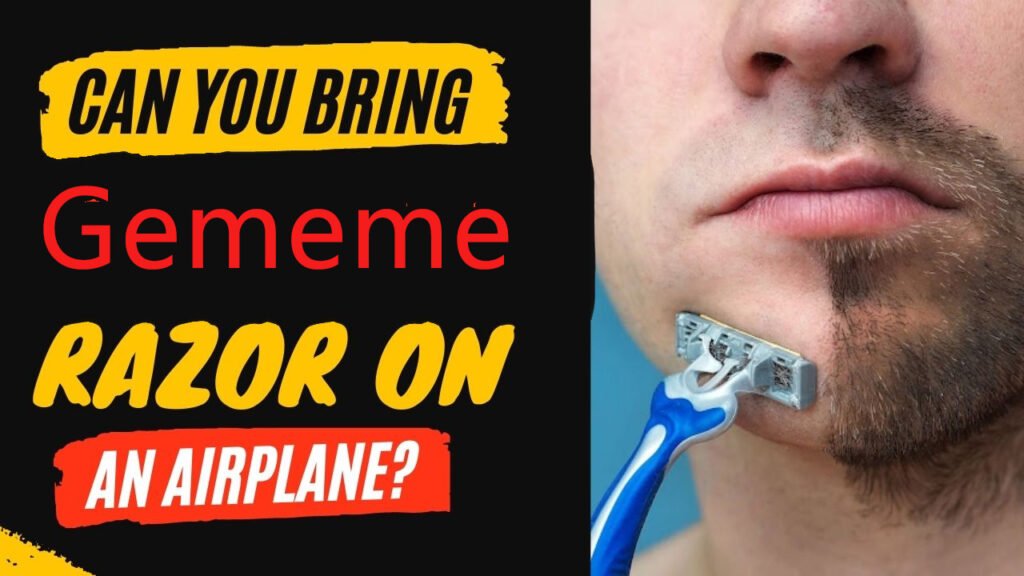
The Rationale Behind TSA Razor Regulations: Safety First
The fundamental reason behind the TSA’s varied regulations for razor lies in the paramount concern for national and passenger safety. The TSA’s primary mission is to prevent any items that could be used as potential weapons from being brought into the aircraft cabin. Razors, by virtue of their sharp blades, naturally fall under this scrutiny.
The degree of restriction imposed on different razor types directly correlates with the accessibility and sharpness of their blades. Exposed and easily detachable blades are considered to pose a higher potential threat, thus facing stricter regulations. For instance, straight razors, with their exposed sharp blades, are deemed similar to box cutters and are, therefore, strictly prohibited in the cabin.
Airport security measures are not static; they are dynamic and evolve in response to perceived threats and technological advancements. Historically, security became exceptionally stringent after 9/11, with many previously permitted items being banned. While some restrictions have gradually eased (e.g., small scissors and knitting needles were allowed in 2005), strict prohibitions on certain blades remain due to their potential to cause harm. For example, a proposed policy change in 2013 to allow small knives faced strong opposition from flight attendant unions and members of Congress, leading to its deferral, highlighting the ongoing sensitivity to sharp objects in the cabin. The TSA also consistently issues reminders about carrying shaving equipment, indicating their vigilance and the need for travelers to stay informed.
This dynamic nature of security policies, coupled with the discretion of security officers, is a significant consideration for travelers. The recurring phrase “the final decision rests with the TSA officer” is not merely a disclaimer but a critical operational reality.
This means that even if the written regulations seem clear (e.g., safety razor handles are permitted), inconsistencies can arise in actual enforcement. Such inconsistencies might be due to individual officer interpretation, the influence of recent security incidents, or even a personal bias towards caution. Therefore, even if an item is technically allowed, the risk of confiscation increases if it visually resembles a prohibited item or is easily misinterpreted. This necessitates that travelers, when asking “Can I bring a razor on a plane?”, be prepared for this potential uncertainty and perhaps adopt a more conservative packing strategy.
Disposable Razor: The Easy Carry-On Choice
For travelers wondering, “Can I bring a razor on a plane?” and seeking to minimize hassle, disposable razors are unequivocally the best answer. They are almost universally permitted in both carry-on and checked baggage, making them the simplest and most straightforward option for air travel.
The primary reason disposable razor is allowed stems from their unique design. The blades of these razor is fixed and encased within a plastic housing. This design significantly reduces the risk of accidental cuts and eliminates the possibility of them being used as a weapon. As such, they are widely considered “TSA-friendly” items.
Disposable razor include those where the entire unit (handle and blade) is intended to be discarded after a few uses.
To ensure a smooth security process, it’s advisable to place disposable razors in a clear toiletry bag or a dedicated compartment within your luggage for easy access and organization.
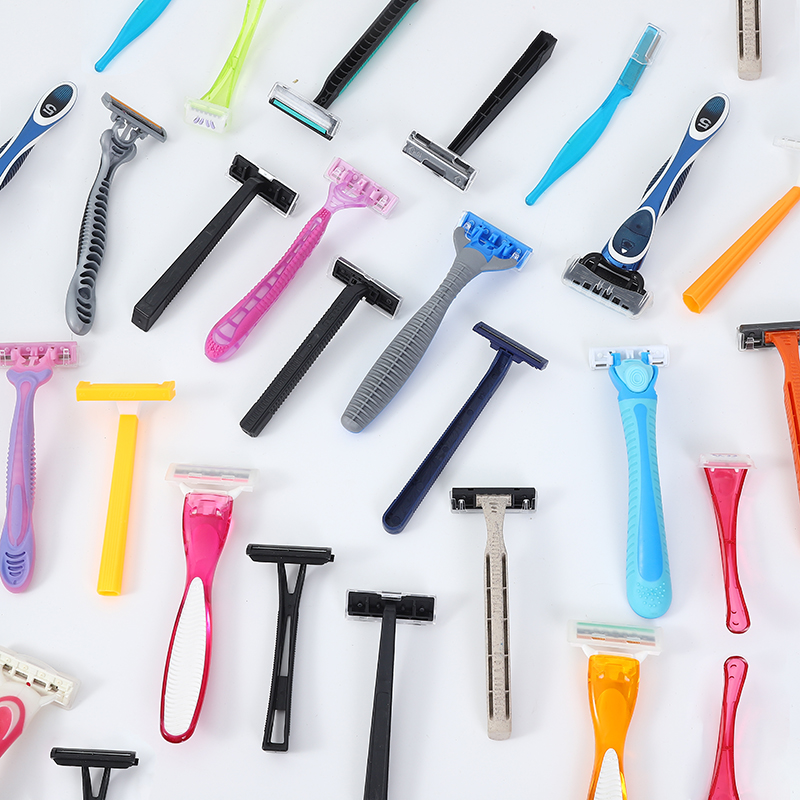
Cartridge Razor: Modern Convenience Meets TSA Compliance
When considering “Can I bring a razor on a plane?”, modern cartridge razors (such as popular models like Gillette Fusion or Mach3, where the blade head is replaceable) are also generally permitted in both carry-on and checked baggage. This offers travelers another convenient and compliant option.
Cartridge razors are allowed for reasons similar to disposable razors: their blades are securely encased within a plastic cartridge. This design ensures that the sharp edges are not exposed, making them safe for transport in the aircraft cabin. The blades are not easily detachable or manipulable in a way that would pose a security risk.
It’s worth noting that spare or replacement cartridges are also allowed in carry-on luggage, provided they are properly packaged, ideally in their original sealed packaging. For the best travel experience, it’s recommended to ensure the cartridge is securely attached to the razor handle or stored in a protective case to prevent accidental cuts or damage to other items in your luggage. Keeping them in a toiletry bag is also a good practice.
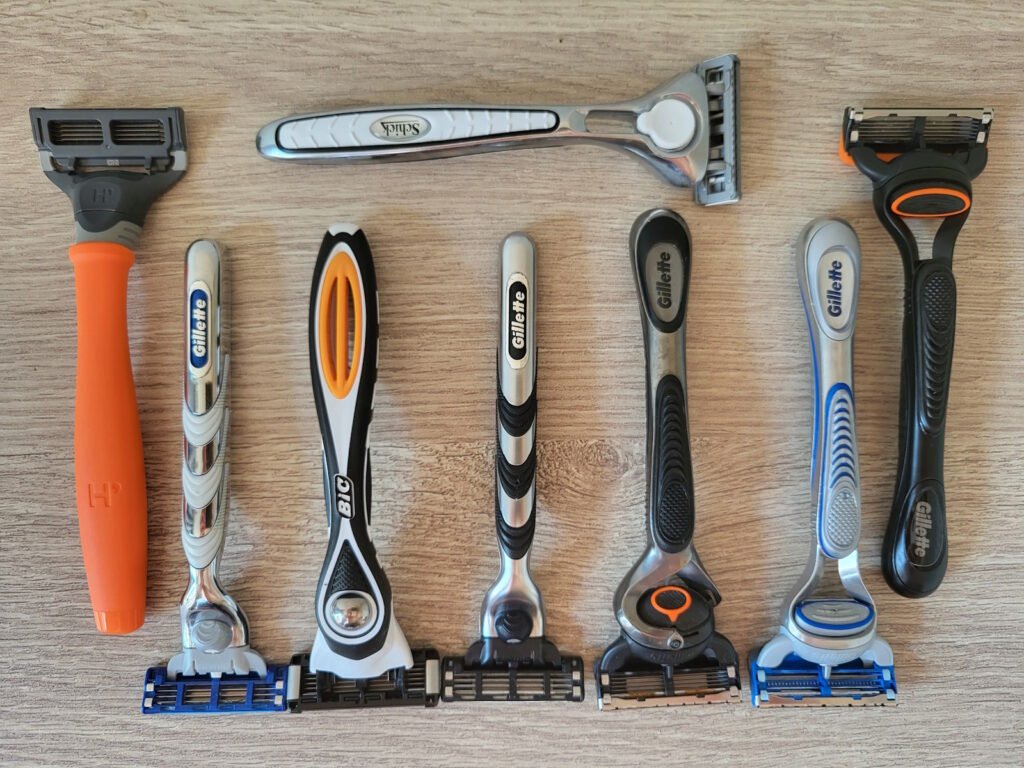
Electric Razor: Powering Your Grooming Journey
For travelers who prefer a cordless shave, electric razors and electric shavers are generally permitted by the TSA. You can comfortably pack an electric razor in either your carry-on or checked baggage, typically without encountering issues at security. Since they do not feature exposed sharp blades, they pose minimal security risk.
However, when it comes to electric models and the question “Can I bring a razor on a plane?”, a crucial detail to pay special attention to is the regulation surrounding lithium-ion batteries. If your electric razor is powered by a lithium-ion battery, these batteries are subject to specific regulations due to their fire risk.
The rationale behind this regulation is that lithium-ion batteries, if damaged or short-circuited, can overheat and pose a significant fire hazard, especially in unpressurized cargo holds. Therefore, the TSA mandates that these batteries must be carried in your carry-on luggage, not in checked baggage.
Furthermore, travelers must consult their specific airline regarding their individual policies on lithium-ion batteries. Airlines often have strict limits on the watt-hour (Wh) rating of batteries, and larger capacity batteries exceeding certain limits may require prior airline approval for transport.8 Failure to comply with these regulations could result in confiscation or even denial of boarding.
It’s advisable to pack your electric razor securely in a padded area of your luggage to prevent damage during transit. For battery-powered models, ensure the battery compartment is secure, and consider removing the batteries if possible, or at least ensuring the device cannot accidentally turn on.
This regulation for electric razors reveals a multi-layered compliance challenge for travelers. It’s not simply a matter of understanding one set of TSA rules. Instead, travelers must first adhere to the TSA’s fundamental safety concern (lithium-ion batteries in carry-on), which then necessitates checking a secondary agency (the airline) for additional specific policies (e.g., watt-hour limits, approval requirements). This cause-and-effect demonstrates how the TSA’s underlying safety concern about lithium-ion battery fire risk leads to a universal packing rule (carry-on only), which in turn prompts travelers to consult a secondary authority (the airline) for specific limitations. This means the answer to “Can I bring a razor on a plane?” for electric razors requires consulting two interconnected regulatory bodies. This highlights the complexity of air travel regulations and the need for travelers to be exceptionally thorough in their research, not relying solely on the primary security agency.
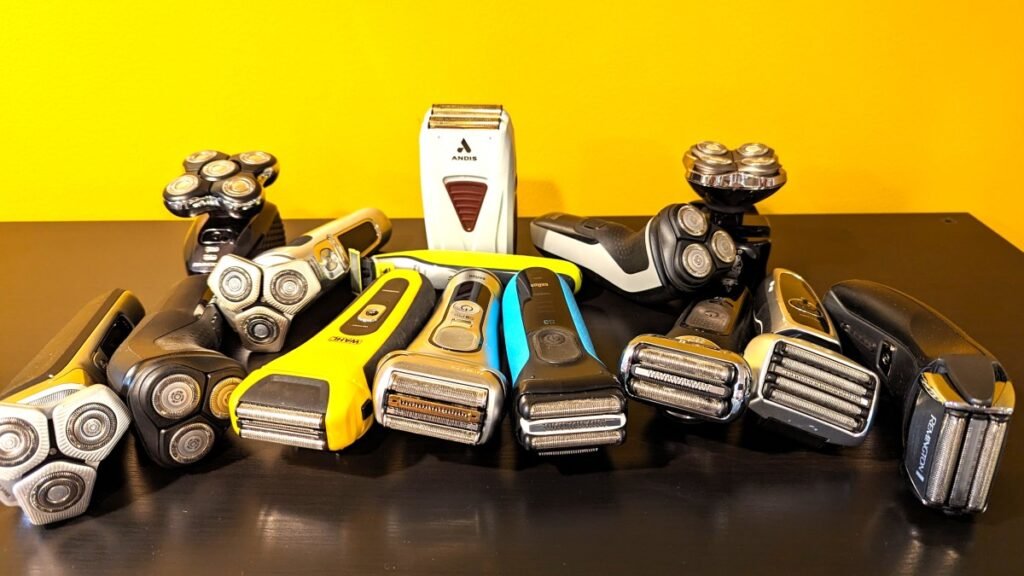
Safety Razor: The Nuance of Travel
Safety razors are perhaps the most contentious and confusing type when it comes to the question, “Can I bring a razor on a plane?” While official guidance offers one answer, real-world enforcement often presents a different scenario, creating considerable uncertainty for travelers.
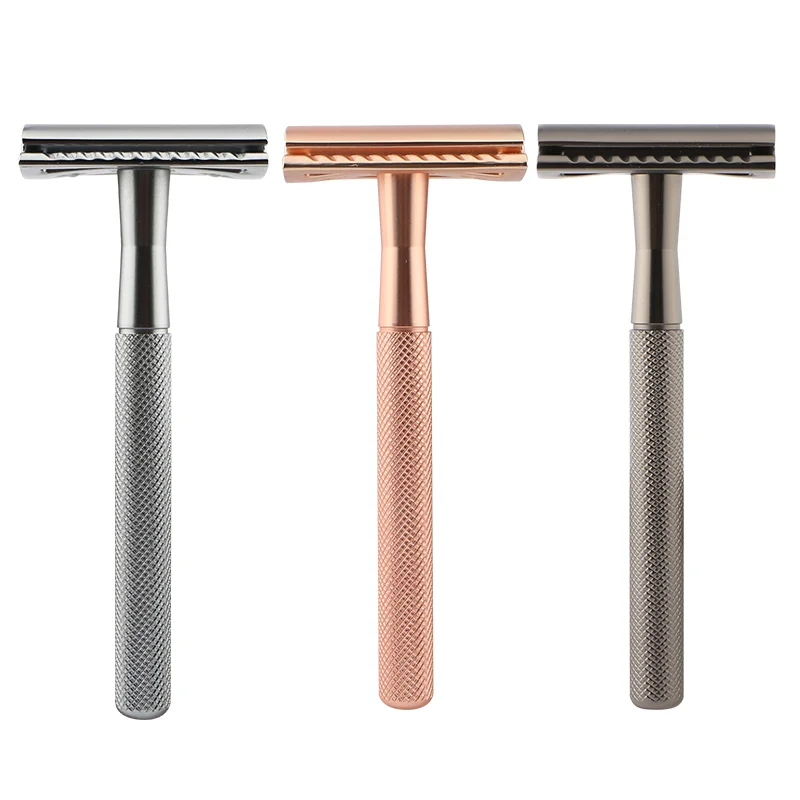
Official TSA Stance vs. Reality: A Critical Discrepancy For Bring A Razor On A Plane
The official TSA website explicitly states that safety razors are allowed through security without the blade. The key is that the blade must be removed prior to entering the screening checkpoint and properly packed in checked luggage, ensuring it is securely wrapped. TSA officers are explicitly not authorized to remove the blades from the holder.
However, this official stance contrasts sharply with widespread traveler experiences and some third-party interpretations, which often contradict the official rules:
Specific anecdotes exist where safety razors (even just the handle) have been confiscated by TSA officers, with supervisors explicitly stating they cannot go through, despite the traveler complying with the “no blade” rule.
Some sources claim that due to “new regulations,” safety razors (even the handle, without blades) are no longer allowed in carry-on bags.
This confusion may stem from ambiguous wording in regulations for other sharp objects, such as box cutters and utility knives, where the phrase “with or without the razor blade” might be misapplied by some officers to safety razors.
Notably, some third-party sources even contradict themselves within their own content, further highlighting the pervasive confusion surrounding this specific razor type.
Advice for Travelers For Bring A Razor On A Plane (Err on the Side of Caution):
Given the significant discrepancy between official policy and real-world enforcement, the most prudent advice for travelers is to adopt an extremely conservative strategy.
Best Practice for Blades: Always pack safety razor blades only in checked baggage, ensuring they are securely wrapped or sheathed to prevent injury to baggage handlers.
Handle Handling: While the official TSA website states that the handle without a blade is allowed in carry-on, it is strongly recommended to pack the entire safety razor handle in checked baggage as well. This is the safest way to avoid potential confiscation and delays, given the inconsistencies in enforcement.
Consider Alternatives: For carry-on convenience, strongly consider opting for disposable razors, cartridge razors, or electric razors, which are far less likely to cause issues at security.
Packing Tips (If Insisting on Carry-On Handle): If a traveler insists on carrying a safety razor handle in their carry-on, despite our strong recommendation against it, consider disassembling it. This can visually signal to TSA officers that the razor is harmless without a blade, potentially avoiding delays. However, reiterate that this is no guarantee against confiscation. Use a protective case for the handle to prevent damage.
This discrepancy between official policy and practical application translates into a risk assessment for travelers. While the TSA officially states that safety razor handles are permitted in carry-on without blades, traveler anecdotes and some third-party sources indicate confiscations even without blades, and even claim “new regulations”. The root cause of this discrepancy lies in the ultimate discretion of TSA officers and the potential misapplication of ambiguous wording from regulations for items like box cutters.This means the issue isn’t whether the rules have changed, but whether their interpretation by individual officers is consistent. This uncertainty, driven by ambiguous rule interpretation and officer discretion, directly leads to unpredictable outcomes for travelers at security. Therefore, when asking “Can I bring a razor on a plane?”, travelers need to consider not just the written rules, but the likelihood of encountering an officer with a different interpretation. In such cases, even if an item is technically allowed, if its appearance is easily misinterpreted or similar to prohibited items, the risk of confiscation is higher. Thus, the article must advise travelers to adopt a pragmatic risk management strategy, prioritizing a smooth journey over strict adherence to rules that may be inconsistently enforced, strongly recommending packing the safety razor handle in checked baggage as well.
Straight Razor: Checked Baggage is the Only Option
For travelers wondering, “Can I bring a razor on a plane?” if referring to a straight razor, the answer is a clear and absolute “no” – they are strictly prohibited in carry-on luggage. Straight razors, also known as “cut-throat razors,” are unequivocally banned from the aircraft cabin.
The reason for this strict prohibition is evident: straight razors feature an exposed, extremely sharp blade that is not encased in any housing. This design classifies them as dangerous weapons, akin to knives or box cutters, posing a significant security risk to aviation.
Therefore, if travelers wish to transport a straight razor, they must pack it in their checked baggage. There are no exceptions to this rule for carry-on luggage.
Crucially, straight razors must be securely sheathed or encased in a protective cover or thoroughly wrapped in protective material before being placed in checked baggage. This precaution is vital to prevent injury to baggage handlers and security personnel. Failure to properly secure sharp objects in checked baggage can still lead to confiscation or delays.
All relevant information consistently confirms that straight razors are prohibited in carry-on and must be properly packed in checked baggage.
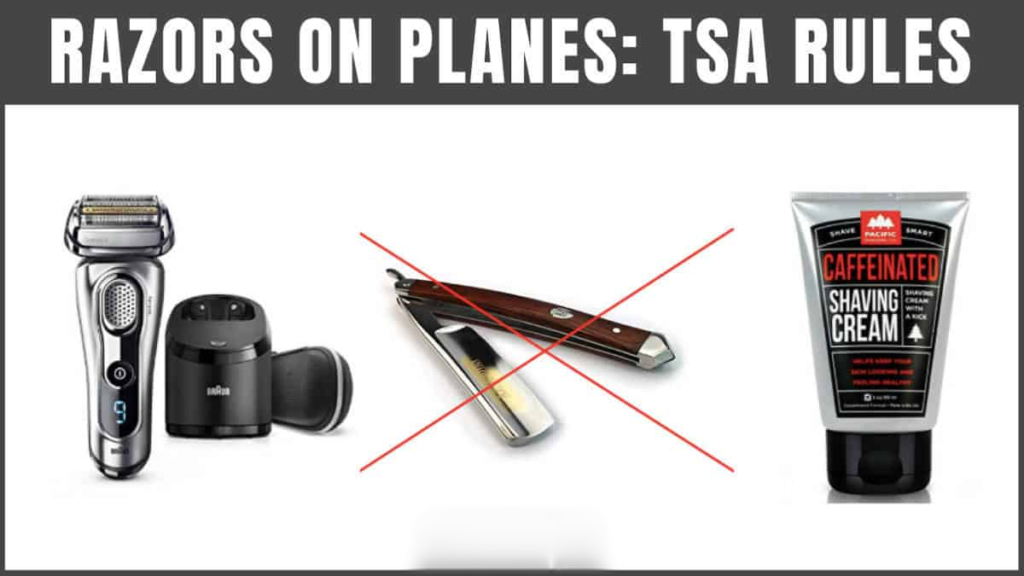
At-a-Glance Guide: Can I Bring a Razor on a Plane?
This comprehensive table will serve as an invaluable, highly scannable resource for travelers seeking an immediate, clear answer to “Can I bring a razor on a plane?”. It centralizes all the core information discussed in the article into an easy-to-digest format, perfect for quick reference at home or even at the airport. Its clear visual presentation enhances user experience and information retention.
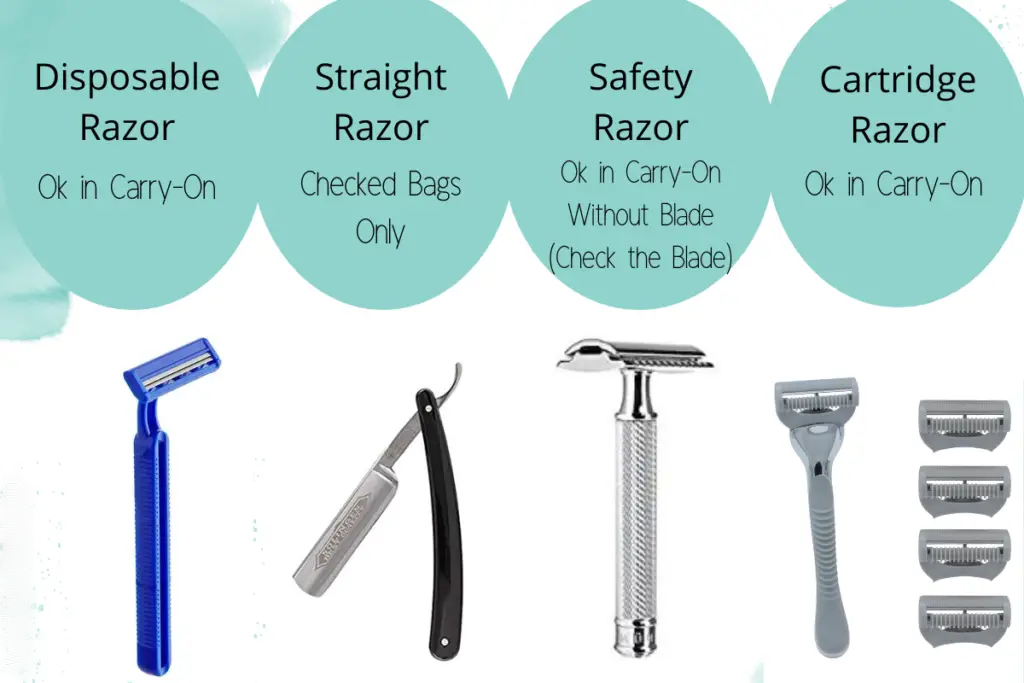
| Razor Type | Carry-On (Allowed/Not Allowed) | Checked Baggage (Allowed/Not Allowed) | Important Notes/Considerations |
| Disposable Razors | Allowed | Allowed | Blades encased; safest option. |
| Cartridge Razors | Allowed | Allowed | Blades encased in cartridge; modern convenience. |
| Electric Razors | Allowed | Allowed | Lithium-ion batteries MUST be in carry-on (fire risk); check airline battery policies. |
| Safety Razor Handle (No Blade) | Officially Allowed, but Checked Recommended | Allowed | Officially allowed without blade, but often confiscated due to officer discretion; pack in checked for safety. |
| Safety Razor Blades | Not Allowed | Allowed | Must be securely wrapped/sheathed; strictly prohibited in carry-on. |
| Straight Razors | Not Allowed | Allowed | Exposed blade; must be securely wrapped/sheathed; strictly prohibited in carry-on. |
Beyond the Blade: Shaving Cream and Other Liquids
In addition to the razors themselves, travelers must also be aware of the TSA’s regulations concerning liquids, gels, and aerosols when packing toiletries. The TSA generally enforces the “3-1-1 liquid rule.” This rule mandates that all liquids, gels, and aerosols in carry-on baggage must be in containers that are 3.4 ounces (100 milliliters) or smaller. All of these containers must fit comfortably into one clear, quart-sized bag, and each passenger is limited to one such bag.
Shaving cream and shaving gel, as aerosols or gels, fall squarely under this regulation.1 Travelers must ensure their shaving cream containers comply with the 3.4-ounce limit if they are to be placed in carry-on luggage. Larger containers must be packed in checked baggage.
This “3-1-1” rule also applies to all other common liquid, gel, and aerosol toiletries, such as shampoo, conditioner, toothpaste, liquid soap, and deodorant. For ease of security screening, it’s advisable to organize these items in a clear, easily accessible bag.
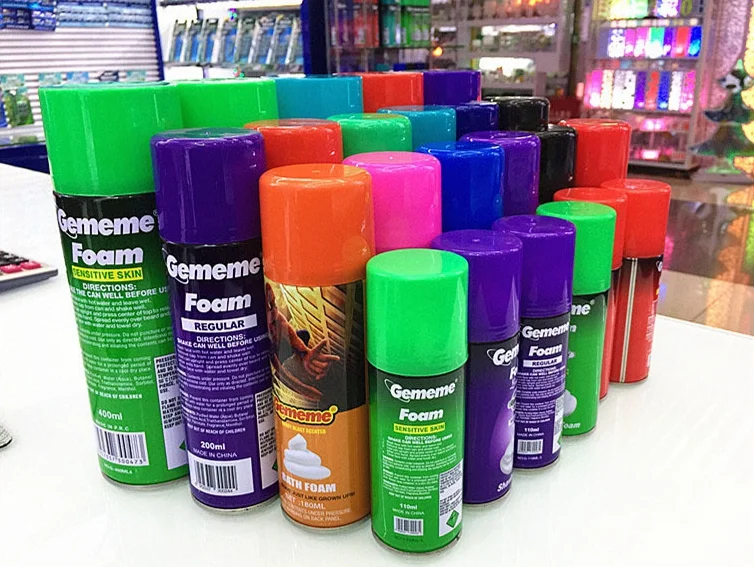
Smart Packing Strategies: Tips for a Smooth Security Check
Properly packing your razor isn’t just about complying with TSA regulations; it’s also crucial for protecting your grooming tools from damage during transit and preventing accidental cuts to yourself, other passengers, or baggage handlers and inspectors.
General Packing Tips for All Razors:
Use a Razor Cover or Sheath: Always use the protective plastic cover or sheath that came with your razor. If you don’t have one, consider purchasing a universal razor cover or creating a makeshift one with sturdy cardboard and tape to securely cover the blade. This protects both the blade and prevents cuts.
Extra Wrapping for Protection (Checked Baggage): For razors packed in checked baggage, especially those with exposed blades or delicate components, wrap the sheathed razor in a piece of cloth or bubble wrap. This provides extra cushioning against impacts and vibrations during transit.
Place in a Separate Toiletry Bag: For convenience and to expedite security checks, place your razor and other toiletries in a small, separate toiletry bag or clear zip-top bag. This keeps items organized and easily accessible if a TSA officer needs to inspect them.
Disassemble (with caution, for carry-on safety razors): If you insist on carrying a safety razor handle in your carry-on, despite our strong recommendation against it, consider disassembling it. This can visually signal to TSA officers that the razor is harmless without a blade, potentially avoiding delays. However, reiterate that this is no guarantee against confiscation. Use a protective case for the handle to prevent damage.
Labeling (for sharp items in checked baggage): If you are packing sharp items like straight razors or safety razor blades in your checked baggage, consider labeling your luggage to indicate the presence of sharp objects that are properly wrapped. This can help security personnel quickly identify the contents and reduce mishandling.
Alternative Shaving Solutions for Travel:
For ultimate peace of mind and to avoid any potential airport hassles, consider these practical alternatives:
Purchase Blades/Razors Upon Arrival: This is often the most convenient and compliant option, especially for safety razor users who wish to avoid checked baggage. Disposable razors or cartridge razors are readily available at most travel destinations.
Mail Blades Ahead: For longer trips, or if you prefer to use a specific brand of blades, another viable, albeit pre-planned, alternative is to mail replacement blades to your destination in advance.
Opt for Travel-Friendly Razors: Reiterate that disposable razors, cartridge razors, or electric razors are inherently the easiest types of razors to carry in your hand luggage, significantly reducing the likelihood of issues at the security checkpoint.
These packing tips and alternative solutions embody a proactive traveler mindset that goes beyond mere compliance, focusing on convenience and risk aversion. The complex and inconsistent TSA regulations (especially for safety razors) are the impetus for these alternatives. Savvy travelers seek ways to circumvent these potential issues entirely. This suggests that travelers are no longer just satisfied with a simple “Can I bring a razor on a plane?” answer, but are actively planning their trips to minimize potential stress and delays. The advice shifts from simple compliance to active risk management, prioritizing a smooth, predictable airport experience, even if it means a little extra preparation before the trip (like ordering blades ahead) or altering routines (buying blades at destination). This highlights a trend where travelers are taking more control over their airport experience by anticipating and avoiding potential regulatory pitfalls.
Frequently Asked Questions (FAQs) About Bring A Razor on a Plane
Q: Can I bring a disposable razor on a plane in my carry-on?
A: Yes, absolutely. Disposable razors, with their safely encased blades, are fully permitted in both carry-on and checked baggage. They are considered the most hassle-free option for air travel.
Q: Are electric razors allowed in carry-on luggage?
A: Yes, electric razors are generally allowed in both carry-on and checked baggage as they do not have exposed blades. However, if your electric razor uses a lithium-ion battery, these batteries must be in your carry-on due to fire risk. Always check your airline’s specific battery regulations.
Q: Can I bring a safety razor on a plane if I remove the blade?
A: Officially, the TSA states that safety razor handles are allowed in carry-on without the blade (blades must be in checked baggage). However, due to inconsistencies in TSA officer enforcement and reports of confiscation even without blades, it is strongly recommended to pack the entire safety razor (handle and blades) in checked baggage to avoid potential issues and delays.
Q: What about straight razors? Can I bring a straight razor on a plane?
A: No, straight razors are considered dangerous weapons due to their exposed sharp blades and are strictly prohibited in carry-on luggage. They must be packed securely in your checked baggage, ensuring the blade is sheathed or properly wrapped.
Q: Does the 3-1-1 rule apply to shaving cream?
A: Yes, shaving cream and gel are subject to the TSA’s 3-1-1 liquid rule. This means containers must be 3.4 ounces (100 milliliters) or less, and all liquids must fit into one clear, quart-sized bag in your carry-on.
Q: Will the TSA confiscate my razor?
A: Yes, TSA officers can and will confiscate razors that do not comply with their regulations. This is particularly common for straight razors and safety razors (especially if blades are present in carry-on, or even the handle, due to officer discretion). Remember, “the final decision rests with the TSA officer”.

Conclusion: Travel Smart, Shave Smooth – Your Razor Questions Answered
In conclusion, the answer to “Can I bring a razor on a plane?” is nuanced and depends entirely on the type of razor you intend to carry. For a hassle-free travel experience, disposable razors, cartridge razors, and electric razors are generally safe and widely accepted options for carry-on luggage. Conversely, straight razors and all loose safety razor blades are strictly prohibited in carry-on and must be securely packed in your checked baggage. Special attention is still required for safety razor handles: while officially permitted without blades in carry-on, packing them in checked luggage is the safest approach due to inconsistencies in enforcement, to avoid unexpected confiscation.
By understanding these specific TSA regulations, coupled with the nuances of airline policies and international travel rules, you will be well-equipped to navigate airport security with confidence. Arming yourself with this information is the best tool for ensuring a seamless security experience, allowing you to focus on the excitement of your destination rather than the stress of your luggage.
We hope this comprehensive guide provides clarity and confidence for your future travels. Pack smart, stay informed, and enjoy your journey free from any airport grooming woes. Your razor questions have been thoroughly answered, ensuring a smooth shave wherever your adventures take you.
